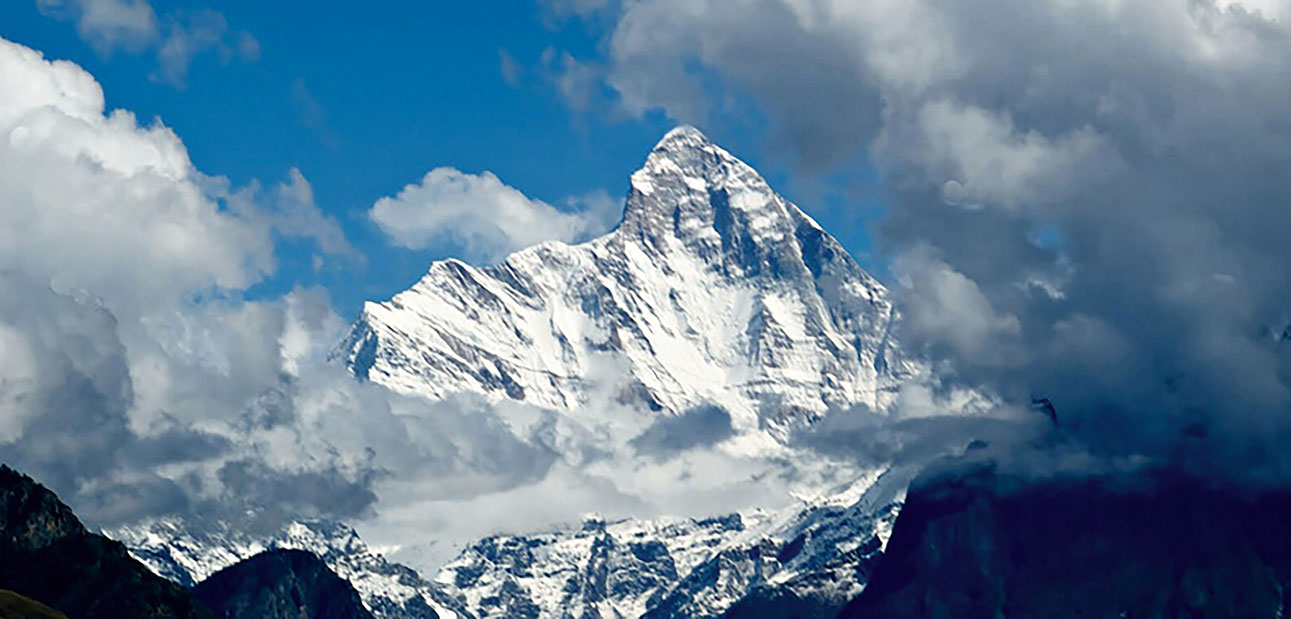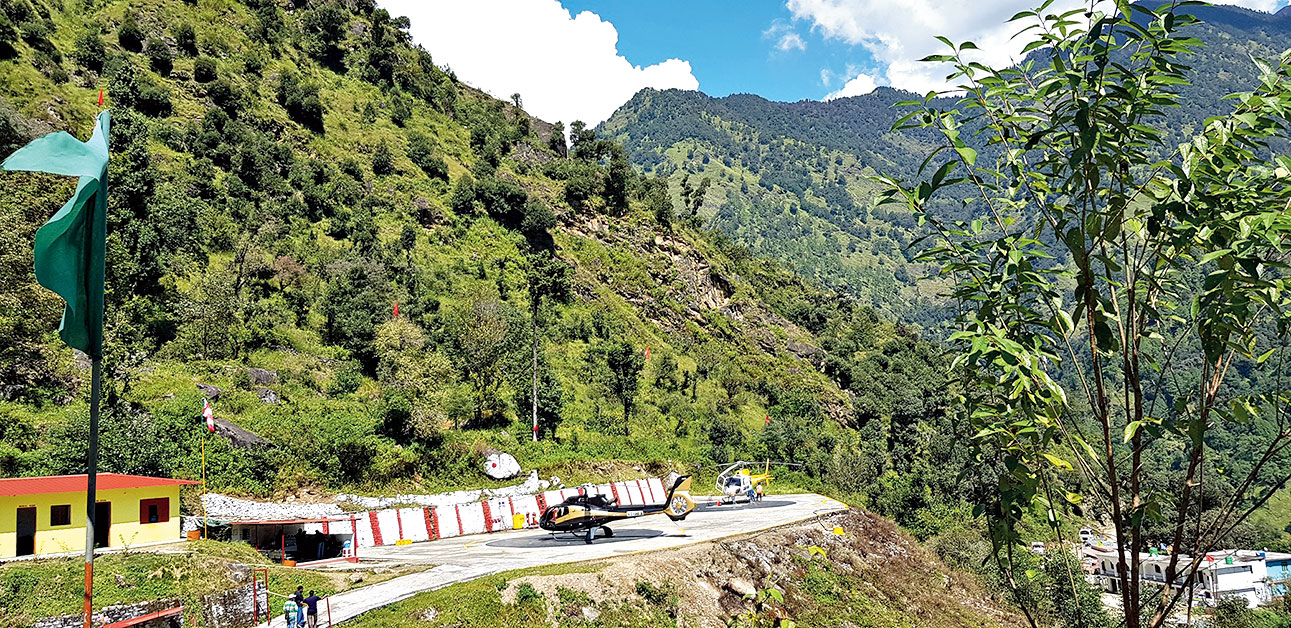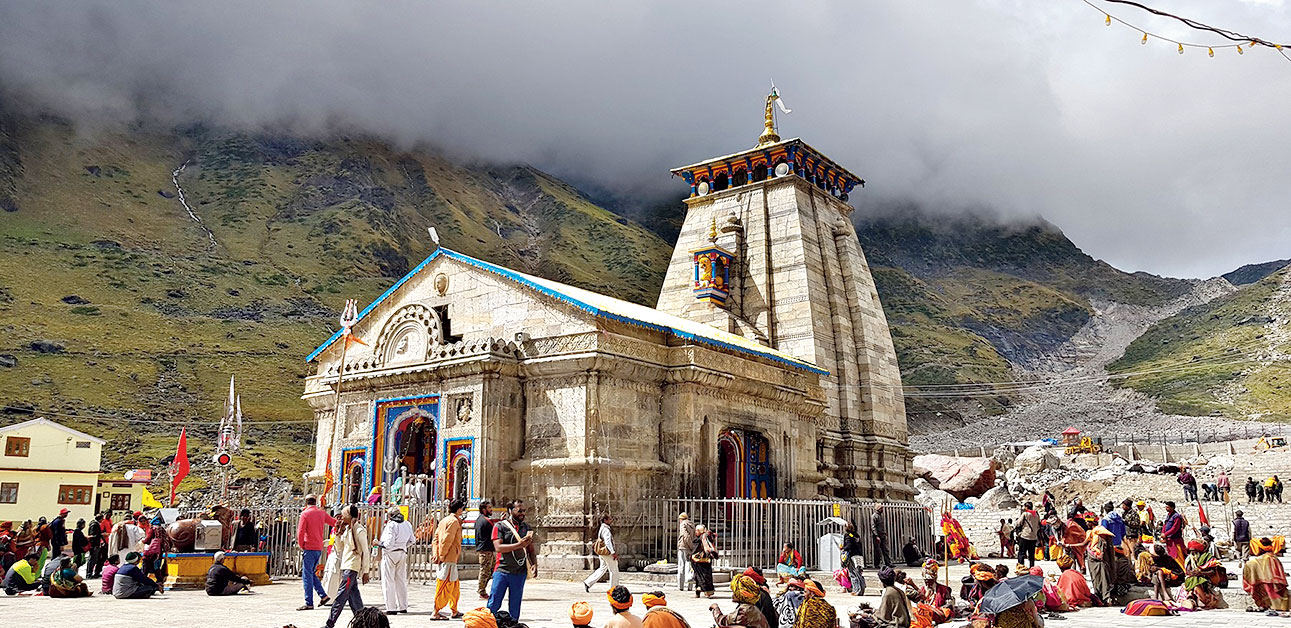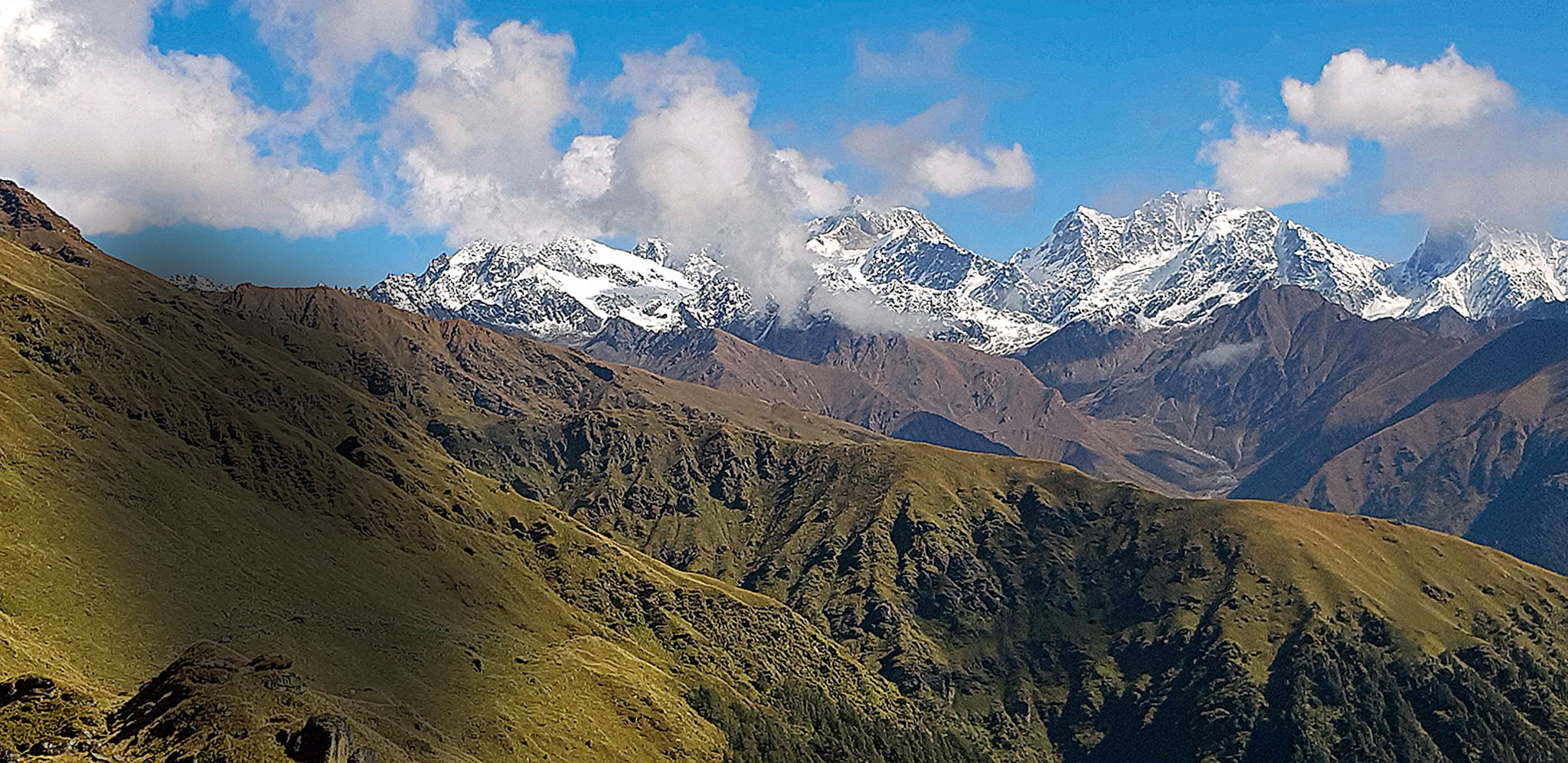It was four precious days in the skies of Uttarakhand, soaring unhurried and, finally, seeing the world like a bird, getting a bird’s-eye view as it were. As my chopper cut through the skies in long sweeping arcs, rotor whirring lazily, I stared and stared all around with unblinking eyes and drank in the sights. Heaven is not a place. It’s these moments that are so full of colour — blues, greens, yellows, oranges and reds — heights, depths, hills, mountains, snow, peaks. It is these times of solitude, quiet, calm and peace punctuated only by the thudding of a heart brimming with gratitude.
The day starts early. Dehradun is still asleep when the shiny chopper takes off with me at dawn en route to Yamunotri. Soon, Mussoorie twinkles into view, a perfect picture-postcard view. I stare spellbound as it passes slowly beneath us. This is going to be a Char Dham Yatra — covering Yamunotri, Gangotri, Kedarnath and Badrinath — with literally a different perspective. Over the next four days I would be taking off from and landing at helipads ranging from the super-tiny tucked away high in the mountains, to large and very large ones used by the defence forces, and spending a night each at the four dhams.

The up-close view of the distinctive Nanda Devi peak from the chopper drew an involuntary gasp Swati Gautam
At Yamunotri, I land at the brand new helipad that clings precariously to the mountainside. It’s cold and rainy too. The vegetation is sparse and the place is almost pilgrim-like frugal in its demeanour. The trek to the Yamuna temple is quite taxing, especially in the freezing rain. You’ll need a pilgrim’s grit to make it to the end. (The source is quite a few kilometres further up and inaccessible to all but the most experienced trekkers.)
Chattering teeth in spite of a couple of hot meals take me through to the next morning, by when it’s time to strap my wings on again.

Some of the helipads that we landed at seemed to cling precariously to the hillsides Swati Gautam
The flight to Gangotri goes over apple-laden orchards and the gurgling Bhagirathi. The Gangotri temple is on the banks of the freezing river. But, here too, the source is almost 18km further up from the temple, at Gaumukh. Both the Yamunotri and the Gangotri temples are rather modern constructions, but their surroundings are as old as the mountains, literally, and the ambience and the energy in the air is phenomenal and permeates through everyone.
It’s a simple pleasure to eat an apple that I’ve just plucked from a tree. Having eaten and packed enough of them, I head off to Kedarnath the following day. There’s a small helipad en route where I need to change choppers — a smaller one will fly me to Kedarnath. As it nears this Shiva temple high up in the mighty mountains, I can see the serpentine line of pilgrims trekking towards the shrine. At the first glimpse of the Kedarnath temple from the skies, any guilt I may have had of not visiting it on foot vanishes. It’s just so sparse, simple, serene and stark.

The Badrinath temple in its ultra-bright colours Swati Gautam
Kedarnath is one of the 12 Jyotirlingas but looks more like a triangular mountain peak. The temple, simple and unornamental, is in the distinctive architectural style of the Uttarakhand region. The shrine is considered one of the holiest. During the cloudburst of 2013, it got saved by a huge boulder that had rolled down the hill and got stuck behind the temple in a way that it split the flow of the water so that most of it went around the temple. Stained walls of the sanctum sanctorum are the relics of the flooding that happened even within the temple. I finally fly back to the base camp to spend the night under twinkling stars and among beautiful flowers and there is a certain crispness to the air.

The Kedarnath shrine is sparse, simple, serene and stark Swati Gautam
The flight to Badrinath the day after is one to remember. En route is Hemkunt Sahib, the famous gurdwara next to the utterly blue Hemkunt Lake. The pilot takes care to not fly directly over the shrine as a mark of respect, but circles it a few times so that I can mumble my prayers from above. Soon the chopper takes a quick detour to give a glimpse of the Nanda Devi peak. As its distinctive hump comes into sight, so close to us, I almost gasp in joy. The copter then flies towards Badri-Mukut, the crown-shaped peaks beyond which is Badrinath.
From afar the Badrinath temple shines in its ultra-bright colours like a navaratna ornament. The mandatory head priest at this North Indian shrine is a Namboodiri Brahmin from south India. Talk about national integration.
A few kilometres up from Badrinath, in Mana village, is the Ved Vyas Gufa where the sage is said to have composed The Mahabharata. Mana is the last village in India, beyond which Tibet begins. To build the road to the border, the rocks are being broken with dynamite and stones fly all around.
I scamper back to my final flight, this time back to Dehradun, over the humongous Tehri dam. The expanse of water seems unending and huge. I cannot help feeling lucky to have had my time in the blue.










